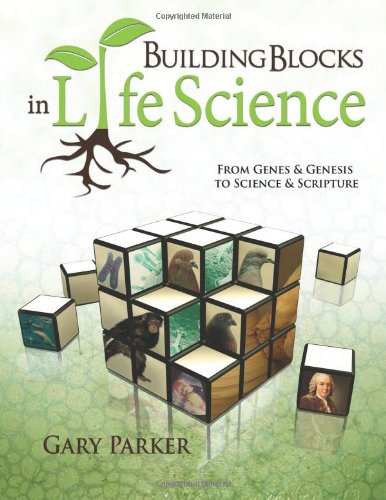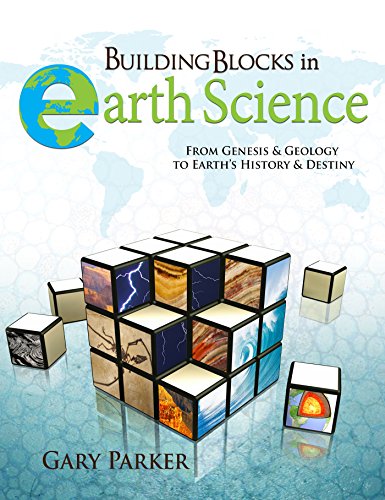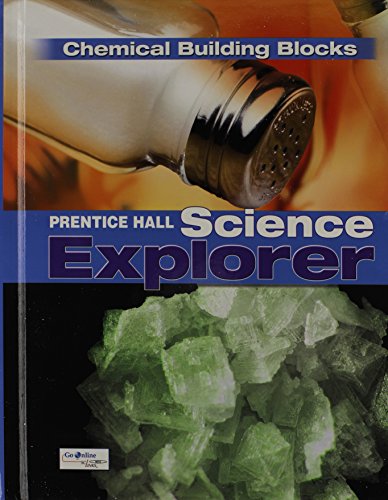When you looking for building blocks in science, you must consider not only the quality but also price and customer reviews. But among hundreds of product with different price range, choosing suitable building blocks in science is not an easy task. In this post, we show you how to find the right building blocks in science along with our top-rated reviews. Please check out our suggestions to find the best building blocks in science for you.
Best building blocks in science
1. LEGO Chain Reactions (Klutz Science/STEM Activity Kit), 9" Length x 1.06" Width x 10" Height
Feature
NAPPA Silver Award WinnerDesign and build 10 amazing moving machines - teach your bricks new tricks
Comes with 80 page instructions, 33 LEGO pieces, instructions for 10 modules, 6 plastic balls, string, paper ramps and other components
Includes a 80 page instructional book with Klutz certified crystal-clear instructions
Includes more than 30 essential Lego elements
Recommended for children ages 8+
Description
Our book includes 33 special LEGO elements that combine with basic bricks from your collection to make your machines go. But dont worry that you wont have the right bricks; we worked with the folks at LEGO to make sure youll need only the most common bricks, and that there are plenty of substitutes. The result is a chain reaction of fun, as one thing leads to another and another and another.
Comes with: 78 page book, 33 LEGO elements, 6 LEGO balls, 6 feet of string, 8 paper ramps, 2 paper pop-up signs, 1 paper funnel ramp, 1 paper flag, 1 paper bucket, 1 platform
2. Building Blocks in Science (Laying a Creation Foundation)
Description
- Have you ever wondered about human fossils, "cave men", skin color, "ape-men", or why missing links are still missing?
- Want to discover when T. Rexwas small enough to fit in your hand? Or how old dinosaur fossils are - and how we know the age of these bones?
- Learn how the Bible's world view (not evolution's) unites evidence from science and history into a solid creation foundation for understanding the origin, history, and destiny of life - including yours!
- Start reinforcing a strong foundation for learning with study questions, discussions, discussion topics, and more for home and school educators!
In this fascinating book, Gary Parker explores some of the most interesting areas of science: fossils, the errors of evolution, the evidence of creation, all about early man and human origins, dinosaurs, and even "races."
Learn how scientists use evidence in the present, how historians use evidence of the past, and discover the biblical world view, not evolution, that puts the two together in a credible and scientifically-sound way!
Having made his own journey of discovery, this former evolutionary biologist and popular author offers a unique and powerful perspective on the science of our world - past and present. Build your world view on a faith that fits the scientific facts!
3. Building Blocks in Life Science
Description
Study clear biological answers for how science and Scripture fit together to honor the Creator.Have you ever wondered about such captivating topics as genetics, the roll of natural selection, embryonic development, or DNA and the magnificent origins of life?
Within these pages you will discover exceptional insights and clarity to patterns of order in living things, including the promise of healing and new birth in Christ.
Study numerous ways to refute the evolutionary worldview that life simply evolved by chance over millions of years.
The evolutionary worldview can be found filtered through every topic at every age-level in our society. It has become the overwhelmingly accepted paradigm for the origins of life as taught in all secular institutions.
This dynamic educational resource helps young people not only learn science from a biblical perspective, but also helps them know how to defend their faith in the process.
4. Exploring the Building Blocks of Science Book 4 Student Textbook (softcover)
Description
Introduce students to real science with Exploring the Building Blocks of Science Book 4 Student Textbook. Foundational scientific concepts and terminology are presented clearly and in a manner thats easy for kids to understand. Using this book gives kids a solid base on which to build a further study of science. This yearlong curriculum contains four chapters each of five scientific disciplines: chemistry, biology, physics, geology, and astronomy, as well as an introduction to the material covered and a concluding chapter, for a total of 22 chapters. The many graphics in this full color textbook reinforce the concepts presented and make the book fun for kids and teachers alike to read. This Student Textbook is accompanied by Exploring the Building Blocks of Science Book 4 Laboratory Notebook (experiments) and Exploring the Building Blocks of Science Book 4 Teachers Manual. Other supplemental materials are available at www.realscience4kids.com. 206 pages5. Building Blocks Book 6 Student Textbook (Exploring The Building Blocks of Science)
Description
Introduce students to real science with Exploring the Building Blocks of Science Book 6 Student Textbook. Foundational scientific concepts and terminology are presented clearly and in a manner thats easy for kids to understand. Using this book gives kids a solid base on which to build a further study of science. This yearlong curriculum contains four chapters each of five scientific disciplines: chemistry, biology, physics, geology, and astronomy, as well as an introduction to the material covered and a concluding chapter, for a total of 22 chapters. The many graphics in this full color textbook reinforce the concepts presented and make the book fun for kids and teachers alike to read. A few of the topics covered are: technology used in the scientific disciplines; acids, bases, and chemical reactions; microscopes; protists; fungi; the physics of motion; Earths layers as a system, the geosphere, and the atmosphere; measuring time; our solar system and other solar systems; collaboration in scientific discovery.This Student Textbook is accompanied by Exploring the Building Blocks of Science Book 6 Laboratory Notebook (experiments) and Exploring the Building Blocks of Science Book 6 Teachers Manual. Other supplemental materials are available at www.realscience4kids.com.6. Exploring the Building Blocks of Science Book 1 Student Textbook (softcover)
Description
Introduce early learners to real science with the Exploring the Building Blocks of Science Book 1 Student Textbook. Foundational scientific concepts and terminology are presented clearly and in a manner thats easy for kids to understand. Using this book gives kids a solid base on which to build a further study of science. This year-long curriculum contains four chapters of each of five scientific disciplines: chemistry, biology, physics, geology, and astronomy, as well as an introduction to the material covered and a concluding chapter for a total of 22 chapters. The many graphics in this full color textbook reinforce the concepts presented and make the book fun for kids and teachers alike to read. This Student Textbook is accompanied by Exploring the Building Blocks of Science Book 1 Laboratory Notebook (experiments) and Exploring the Building Blocks of Science Book 1 Teachers Manual. Other supplemental materials are available at www.realscience4kids.com.7. Building Blocks in Earth Science
Description
Develop critical thinking skills as you explore what to believe and why you believe it!- Analyze the structure of the Earth and its atmosphere while developing a strong biblical worldview of creation
- Compare and evaluate various minerals and rocks, the water table, and types of volcanoes
- Survey Earths tornadoes, faults, polarity, magnetism, reeds, folding, hypercanes, deltas, and much more!
- Why a curator of the Chicago Field Museum once concluded there were fewer examples of evolutionary transition than we had in Darwins time and how supposed evolutionary missing links mask the trust of there being none.
To understand Earth science, it requires teamwork, combining the methods and evidences of both science and history. And if you also use the history book of the world, the Bible, you can make sense of the Earths surface - altered, formed, and weathered over time, into the landscapes and vistas we enjoy today.
When you understand the difference in history and science in questions related to our planet, you can more effectively discern the evidences seen in the world around you. Science is an awesome tool for understanding the workings of our world and for applying such knowledge to benefit mankind. Scientific truth however is not determined by consensus, compromise, majority vote, popularity, celebrity endorsement, money, media endorsement, or best-selling books - and it is at its best when it is rooted in a worldview that begins with the Bible!
8. Exploring the Building Blocks of Science Book 5 Student Textbook
Description
Introduce students to real science with Exploring the Building Blocks of Science Book 5 Student Textbook. Foundational scientific concepts and terminology are presented clearly and in a manner thats easy for kids to understand. Using this book gives kids a solid base on which to build a further study of science. This year-long curriculum contains four chapters each of five scientific disciplines: chemistry, biology, physics, geology, and astronomy, as well as an introduction to the material covered and a concluding chapter, for a total of 22 chapters. The many graphics in this full color textbook reinforce the concepts presented and make the book fun for kids and teachers alike to read. This Student Textbook is accompanied by Exploring the Building Blocks of Science Book 5 Laboratory Notebook (experiments) and Exploring the Building Blocks of Science Book 5 Teachers Manual. Other supplemental materials are available at www.realscience4kids.com. 224 pages9. Iggy Peck, Architect
Feature
Abrams Books for Young ReadersDescription
And now you can follow Iggys further adventureswith his friends Rosie Revere and Ada Twistin the instant New York Times bestsellerRosie Revere and the Raucous Riveters, an all-new chapter book starringThe Questioneers!
Some kids sculpt sand castles. Some make mud pies. Some construct great block towers. But none are better at building than Iggy Peck, who once erected a life-size replica of the Great Sphinx on his front lawn! Its too bad that few people appreciate Iggys talentcertainly not his second-grade teacher, Miss Lila Greer. It looks as if Iggy will have to trade in his T square for a box of crayons . . . until a fateful field trip proves just how useful a mast builder can be.
Collect them all! Add these other STEM favorites from #1 New York Times bestselling team Andrea Beaty and David Roberts to your family library today!
Rosie Revere, Engineer
Ada Twist, Scientist
Rosie Revere and the Raucous Riveters
Ada Twist and the Perilous Pants
Ada Twists Big Project Book for Stellar Scientists
Iggy Pecks Big Project Book for Amazing Architects
Rosie Reveres Big Project Book for Bold Engineers
10. SCIENCE EXPLORER C2009 BOOK K STUDENT EDITION CHEMICAL BUILDING BLOCKS (Prentice Hall Science Explore)
Description
1. Introduction to Matter2. Solids, Liquids, and Gases
3. Elements and the Periodic Table
4. Exploring Materials












